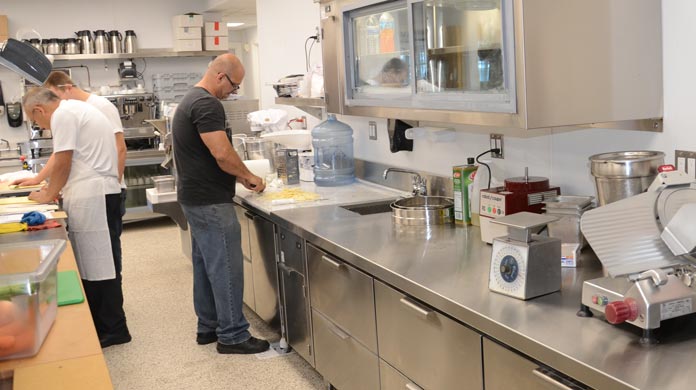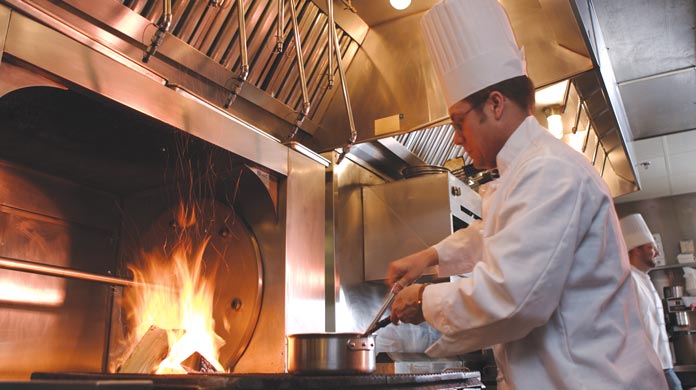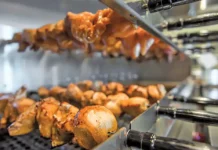
The hospitality industry can be a risky business if its potential liability exposures are not properly identified and addressed prior to a claim being made. Insurers are aware of the high costs involved with restaurant/food service-related claims and keep this in mind when evaluating a potential policy. Owners are getting hit with claims and facing insurance increases, leading them to examine what could have been done to prevent the situation in the first place.
Risk management can help you run your business more profitably and effectively by identifying and minimizing restaurant industry risks. An effective risk management strategy enables you to proactively prepare for potential losses, provide a safe environment for your employees and customers and even secure better pricing on your insurance coverage. Businesses and the professional advisors that guide them have to be diligent and ask the routine and creative “what ifs?”, and “will we be ready?” questions.
When it comes to your business, a risk can be classified as any occurrence that could have a negative impact. The first step is to identify each risk, then assess the likelihood of it occurring – along with its potential consequences. Some risks are prevalent in most organizations, such as workplace safety hazards. Others will be unique restaurant industry risks, such as liquor liability.
SLIPS & FALLS
Maintaining a safe environment for employees, contractors, and other visitors to your restaurant is an essential element of risk management. Slips, trips and falls are among the most common and costly workplace accidents across all industries, accounting for 35% of incidents and 65% of lost work days. In fact, slips, trips and falls represent the most common causes of workplace injury after motor vehicle accidents. The good news is that the majority of slips, trips and falls in the workplace are preventable. All of these hazards can be addressed and mitigated through the implementation of slip, trip and fall prevention best practices that you should discuss with your insurance broker.
If an accident does occur in spite of your best efforts, an immediate response is necessary. Document exactly what occurred, including who was involved and where, why and how it happened. Learning the details of an incident is useful for detecting trends and can be used to put measures into place to prevent recurrences.
WAGE & HOUR CLAIMS
According to industry reports, wage and hour lawsuits have become a major cause of concern for businesses. Wage and hour claims occur when an employee accuses his or her employer of failing to pay overtime wages. Data from the Annual Workplace Class Action Litigation Report shows that wage and hour lawsuits have surpassed every other form of workplace class action in recent years. It’s essential for every business, particularly small or mid-sized businesses that may not have an in-house legal team, to make sure they are covered in the case of a wage and hour lawsuit. Employment practices liability insurance can greatly reduce your exposure if you get the right coverage. Check with your insurance broker to confirm your coverage and receive help in finding a policy that provides the coverage you need. Make it a priority to educate your staff about proper regulations and reporting methods. If employees have been briefed on policies regarding wages and hours, it will result in less confusion and fewer opportunities for claims.

Finally, encourage your employees to take their questions and concerns regarding wage and hour issues to a member of your senior management team. It’s better to have an open dialogue with employees before their concerns turn into formal grievances and litigation. Not only will this cut down on possible legal costs, but it will result in a better working environment.
LIQUOR LIABILITY
There is an ever increasing risk to selling alcohol to guests in a restaurant setting. Dram shop laws are enacted to hold establishments that serve alcohol responsible for damages that were caused to others by their patrons. The dram shop cases have gone beyond just bars/pubs and nightclubs into other establishments such as stadiums/arenas and restaurants. In many states that have enacted this law, an establishment may be held liable for damages resulting from the actions of a “visibly intoxicated patron”. Some of the cases have resulted in settlements into the tens of millions of dollars.
Restaurant owners and their employees must be vigilant in serving alcohol to patrons. It is vital to train your staff in recognized programs such as TIPS® and the National Restaurant Education Foundation’s ServSafe Alcohol™, encouraging and incentivizing them to identify potentially intoxicated patrons to management. Establishing relationships with local law enforcement to understand the laws in your state is also critical, as they can vary greatly based on location.
PRIVACY/DATA BREACHES
Several highly publicized restaurant data security failures (P.F Changs, Wendy’s, etc.) forced restaurant and food service businesses of all sizes to reconsider their own data security practices. These high profile data breaches have forced them to question their own cyber security, data vendors, and the financial implications to their business. What has become obvious is the need to understand the risk and to be prepared for the worst case
scenario.
Almost every restaurant or food service business has some kind of network, database or online presence that puts it at risk for litigation. Technological advances have made it easier to manage a wide range of information about customers, vendors and employees. Virtually all businesses that use computer systems are to some extent vulnerable to costly exposures associated with system breaches. In fact, businesses in the hospitality industry may have higher levels of exposure because they collect vast amounts of private data from customers as a part of their day-to-day operations through credit card transactions, online reservations and rewards programs. Private data may be both personal (names, physical addresses, email addresses, social security numbers) and financial (credit card and banking).
 Businesses need to dictate how sensitive information can be accessed by employees. Important data should only be accessed by essential parties, which will limit the risk of security breaches and make it easier to track who is privy to sensitive information. Businesses must also ensure that their networks are secure by implementing data encryption, strengthening passwords and protecting access from unauthorized individuals.
Businesses need to dictate how sensitive information can be accessed by employees. Important data should only be accessed by essential parties, which will limit the risk of security breaches and make it easier to track who is privy to sensitive information. Businesses must also ensure that their networks are secure by implementing data encryption, strengthening passwords and protecting access from unauthorized individuals.
Most importantly, obtaining proper cyber/privacy liability insurance coverage will alleviate the impact of the financial burden associated with a breach. Most cyber insurance policies cover the costs of data breach investigation, notifications that must be provided to customers, retaining crisis management and public relations firms as well as credit monitoring costs and remediation to correct the breach event.
FOOD ALLERGIES
Food allergies are clearly a public health concern and should continue to be a focus for the restaurant industry. It is becoming increasingly common for restaurant staff to ask their customers whether they have any allergies to food. Could this new awareness be a result of increasing lawsuits by patrons?
Having your wait staff address any food allergies is a step that goes beyond the written warnings commonly seen on menus. The server can respond effectively if their customer says “yes” by inquiring specifically about their allergy and in turn, communicating it to the kitchen staff. Ingredients used to make certain dishes sometimes change, so informing customers about specific items that are known allergens may reduce the risk of an incident. Used as a standard practice, it may help restaurant owners be more proactive than simply having written warnings on the bottom of a menu.
FOOD-BORNE ILLNESS/CONTAMINATION
Restaurants and other types of hospitality entities face unique exposures when it comes to food-borne illnesses and contamination. The Centers for Disease Control & Prevention (CDC) estimates that each year roughly 1 in 6 Americans become sick from consuming foods or drinks that are contaminated with harmful bacteria, viruses or parasites. The financial and social impact of a food borne-illness outbreak can greatly damage your bottom line, reputation and even result in the closure of your operation. Some of the most common food-borne illnesses include: E-coli, Salmonella, amongst many others.
The use of food safety practices by the entire organization minimizes the chance of a food-borne illness outbreak. To manage the risk of food-borne illness, you must implement policies that focus on good health and hygiene practices and ways to maintain the viability of the business. Every food establishment uses, processes, and sells food differently. However, the general issues and key principles of food safety remain the same. All food safety training programs should contain these three main factors: Personal Hygiene for Food Professionals, Time & Temperature Control, Cross-contamination Prevention.
Food-borne illness claims are among the greatest financial risks facing the food industry. It is vital that you investigate options that would insure you against these kinds of losses. Food-Borne Illness/Trade Name Restoration insurance covers major factors of the financial impact of a food-borne illness outbreak, which include loss of income and incident response/public relations expenses.

FIRE SAFETY/SUPPRESSION SYSTEMS
The restaurant industry is at a higher risk for fire than most establishments due to the environment with the potential of combustibles in close proximity to hot surfaces and open flames. According to the National Fire Protection Association (NFPA), 57% of restaurant fires involve cooking equipment. Installing an automatic fire suppression system in your kitchen is not only a mandatory aspect of restaurant fire prevention, it’s also a requirement for insurance carriers. In fact, if you do not have a contract with a vendor for regular maintenance of your automatic fire-suppression system (quarterly or bi-annual maintenance) this could cause you to be dropped from coverage. Review your vendor contracts to ensure proper equipment maintenance is included.
As we have illustrated, the risks associated with the restaurant or food service business are not always as obvious as one may imagine. Not only does a business need to establish a safe working environment, but it must be prepared for the unforeseeable accidents, damages or disasters that might impact the business and its property.
























